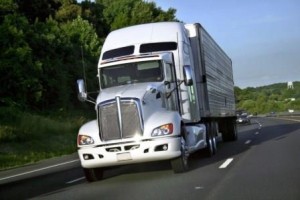Does the emphasis placed on making semi-trucks connected and more technologically advanced lose focus on the importance of making trucks and truck driving safe for motorists?
Fleet Owner recently published an article titled “Path to autonomous trucks will be a smooth road for drivers” – it was an interesting read. It seemed to emphasize the  importance of future technologies influencing the trucking industry by making truck driving less burdensome and safer for drivers. In doing so, there were a few points that stuck out.
importance of future technologies influencing the trucking industry by making truck driving less burdensome and safer for drivers. In doing so, there were a few points that stuck out.
“The future truck will be a safe truck. It will save the life of the driver and the people around them. It will be a connected truck, connected to the world outside and [the] world outside will be connected to this truck.”
This conclusion assumes that a connected truck is a safe truck, and it is unclear whether this is truly the case. Autonomous technology already exists – a number of these technologies are already available for both motor vehicles and semi-trucks. While the idea is for these types of technologies to improve safety by reducing the level of human error associated by operating large trucks and automobiles, recent instances of hacking have called this potential trade-off into question.
Does it really matter if a car or truck can alert a driver when his or her vehicle veers out of its lane of travel, or whether a pedestrian suddenly steps out in front of it if the technology is flawed in such a way that someone else can take control of the car or truck due to vulnerabilities in the system? Shouldn’t we expect all drivers to pay attention to the road, which also means being prepared for anything to happen?
This is not to say that the technology being developed and tested will not have its uses – it will. However, creators of these advances and the manufacturers of the vehicles in which these technologies will be housed must also place emphasis in ensuring that the connected technology will not make matters worse.
“[Trucking] will need to entice young drivers by giving them a work environment that is less stressful, less disenfranchised – that enables them to connect to the world outside. They want to be connected to their friends, to Facebook or whatever it is: You have to give them some time during their work cycle where they relax, sit back and watch their iPad.”
Why is this necessary or important in this particular line of work? The ability for drivers to stay connected to the world around them (i.e., using Facebook) should not be a draw to this industry. It also assumes that the technology that will allow drivers to stay connected to the world around them is safe enough to allow for the (unnecessary) distraction from the task at hand – ensuring that semi-truck drivers reach their destinations safely, without putting either themselves or the rest of the motoring public at risk.
Do we really want truck drivers scrolling through Facebook or tweeting when they should be focused on more important things? If anything, the chance to be and remain connected should be made available to drivers while they take their breaks.
“[I]t’s safe to assume the future truck will be a smart truck. The question that it begs is: Are we smart enough to embrace the future?”
We can embrace the future while at the same time retaining a healthy level of skepticism about the incorporation of autonomous technology into semi-trucks, as well as the priorities of the trucking industry with regard to the incorporation of these advancements and developments.
Safety should be a priority for those pushing for the incorporation and eventual implementation of these changes; however, both the safety of the drivers as well as the legitimate safety concerns held by everyday motorists must be addressed in a meaningful way.
